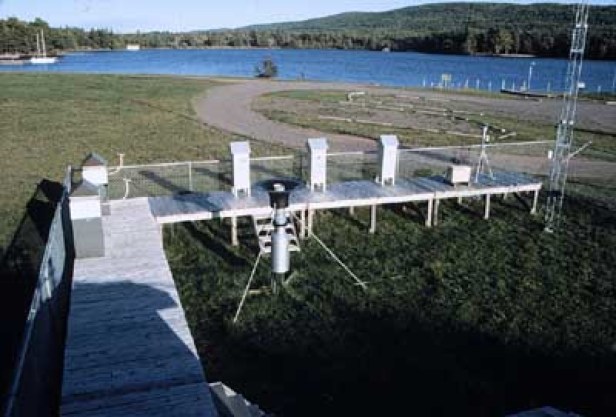It’s ‘Raining PFAS’, Even In Remote Areas of the Upper Peninsula
By Ben Meyer | WXPR | September 9, 2021

Read the full article by Ben Meyer (WXPR)
"When it rains in Chicago or Cleveland, chemicals fall with the raindrops.
That makes sense, said Marta Venier, an Indiana University environmental chemist who leads the Integrated Atmospheric Deposition Network (IADN).
‘In general, for most of the chemicals, chemicals are where people live,’ she told a group at the Institute for Journalism and Natural Resources.
But when it rains in Eagle Harbor, a remote village at the northernmost tip of the Upper Peninsula, the water isn’t pure, either.
‘You can actually say it’s raining PFAS at this point,’ Venier said.
Venier’s team found notable concentrations of PFAS in rainwater not only at sampling sites in industrial cities like Chicago or Cleveland, but in Eagle Harbor, as well.
In fact, chemical particles moving through the sky are more important than those moving through water on the ground, Venier said.
‘Atmospheric transport is the most important pathway of chemicals getting into the lake,’ she said.
Eagle Harbor is nowhere close to major manufacturing plants, where most atmospheric PFAS originates. But distance often isn’t an obstacle for the compounds.
‘They can travel long distances. They’ve been measured in polar bears and in the Arctic, in regions where they shouldn’t be there,’ Venier said.
Once PFAS compounds make it to far-flung places, they’re likely to stay in the waters, the wildlife, and perhaps the people there.
It takes thousands of years for the chemicals to break down.
‘We are going to be dealing with PFAS for a very long time, which is good for chemists. It will keep us busy,’ Venier said. ‘But it’s not necessarily good for the environment, because these chemicals are very persistent.'”…
This content provided by the PFAS Project.
Location:
- North AmericaUSIllinois
- North AmericaUSIndiana
- North AmericaUSMichigan
- North AmericaUSNorth Carolina
- North AmericaUSOhio
- North AmericaUSWisconsin
Topics: